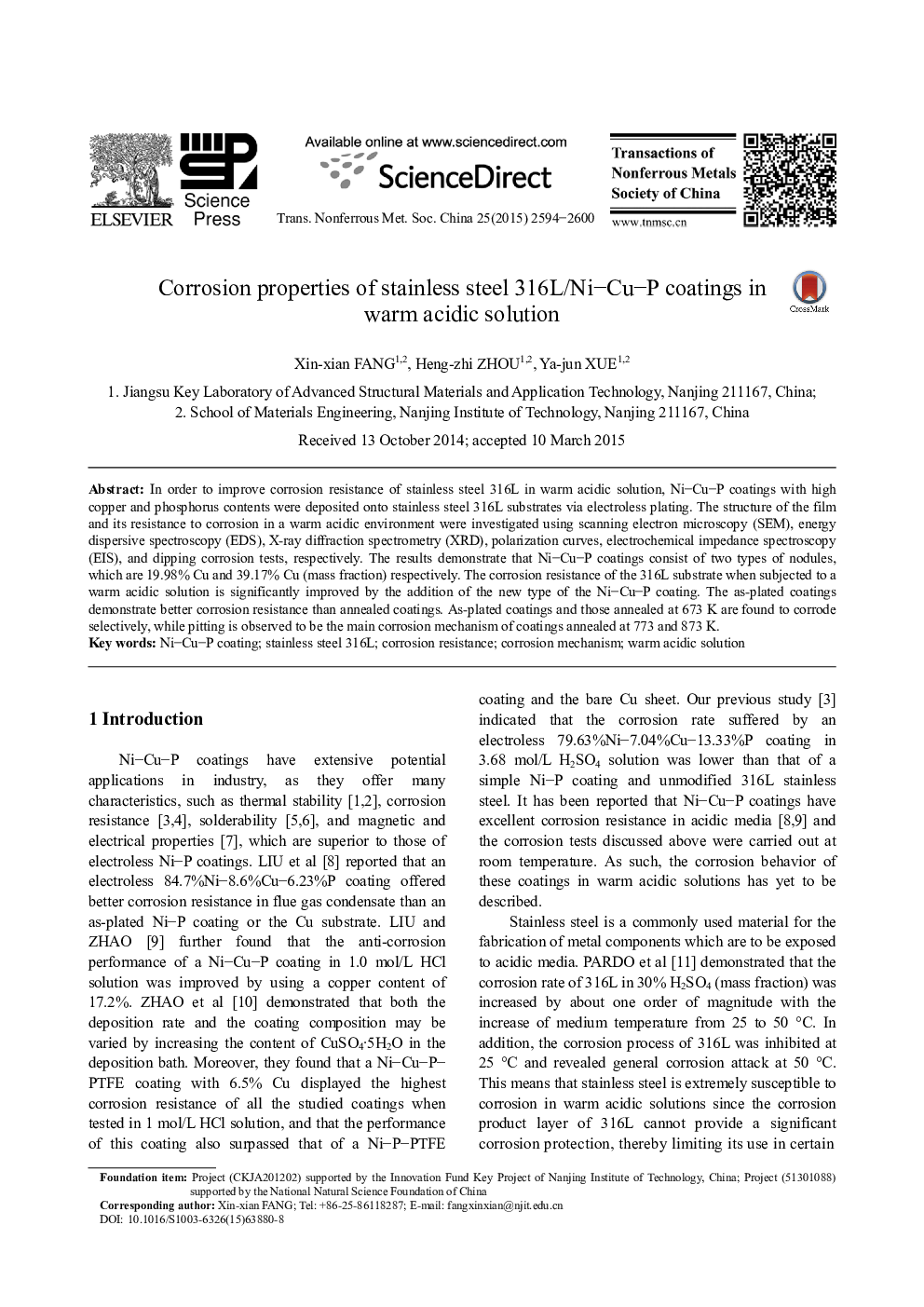| Article ID | Journal | Published Year | Pages | File Type |
|---|---|---|---|---|
| 1636704 | Transactions of Nonferrous Metals Society of China | 2015 | 7 Pages |
Abstract
In order to improve corrosion resistance of stainless steel 316L in warm acidic solution, Ni-Cu-P coatings with high copper and phosphorus contents were deposited onto stainless steel 316L substrates via electroless plating. The structure of the film and its resistance to corrosion in a warm acidic environment were investigated using scanning electron microscopy (SEM), energy dispersive spectroscopy (EDS), X-ray diffraction spectrometry (XRD), polarization curves, electrochemical impedance spectroscopy (EIS), and dipping corrosion tests, respectively. The results demonstrate that Ni-Cu-P coatings consist of two types of nodules, which are 19.98% Cu and 39.17% Cu (mass fraction) respectively. The corrosion resistance of the 316L substrate when subjected to a warm acidic solution is significantly improved by the addition of the new type of the Ni-Cu-P coating. The as-plated coatings demonstrate better corrosion resistance than annealed coatings. As-plated coatings and those annealed at 673 K are found to corrode selectively, while pitting is observed to be the main corrosion mechanism of coatings annealed at 773 and 873 K.
Related Topics
Physical Sciences and Engineering
Materials Science
Metals and Alloys
Authors
Xin-xian FANG, Heng-zhi ZHOU, Ya-jun XUE,
